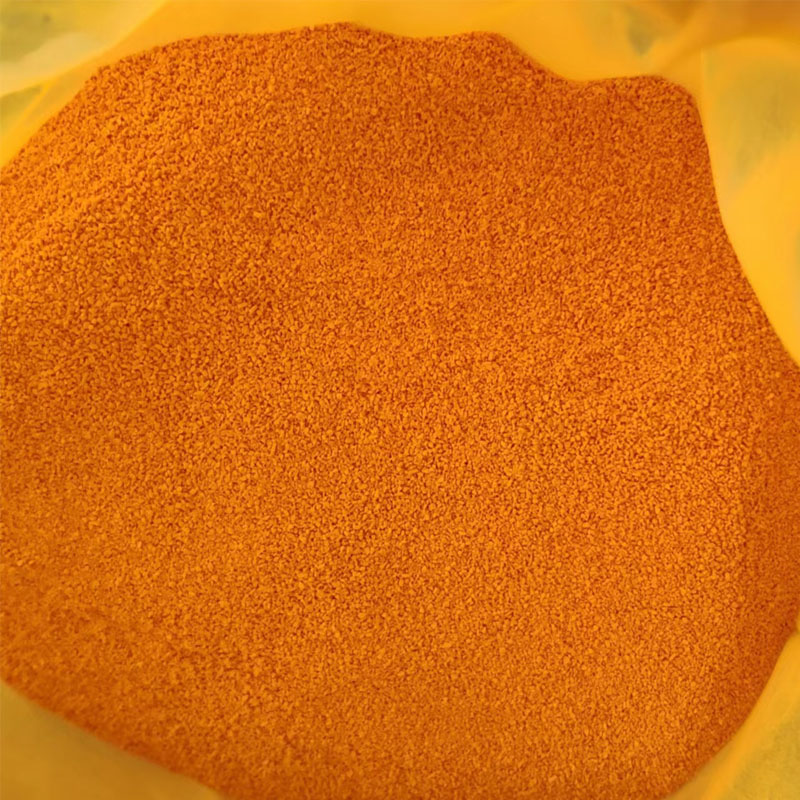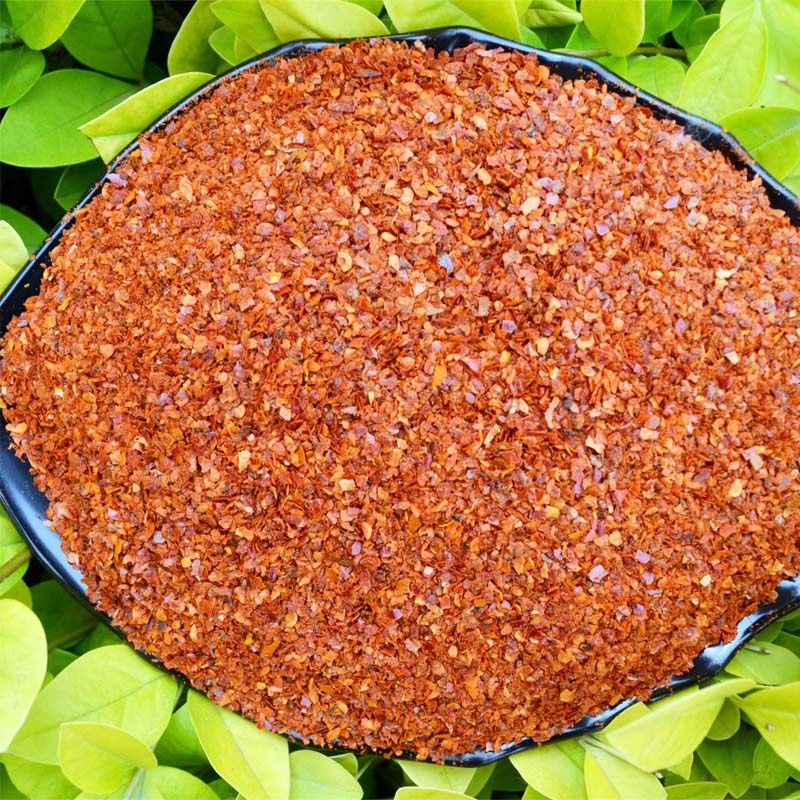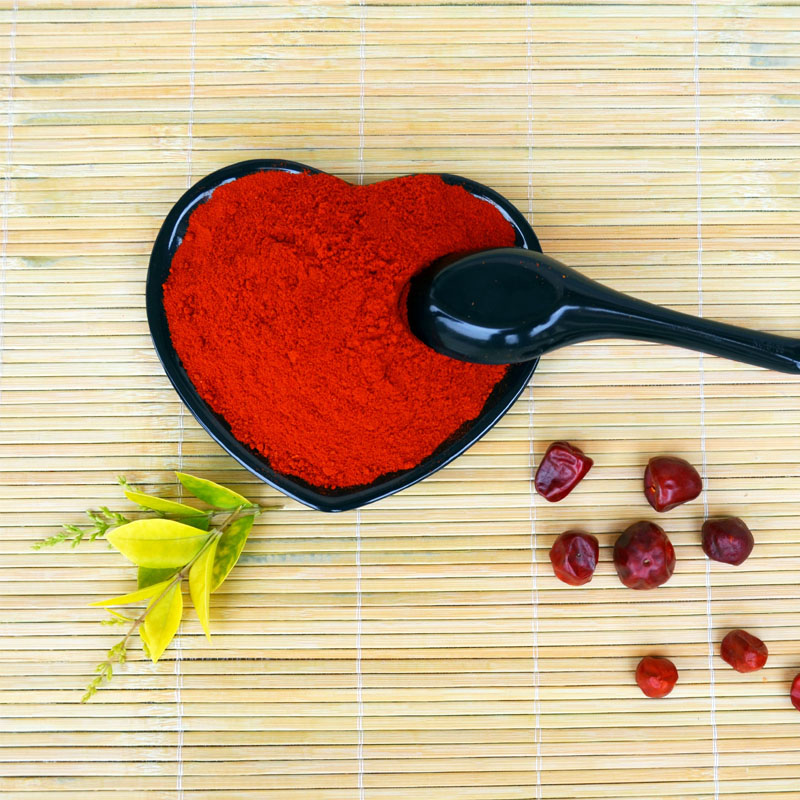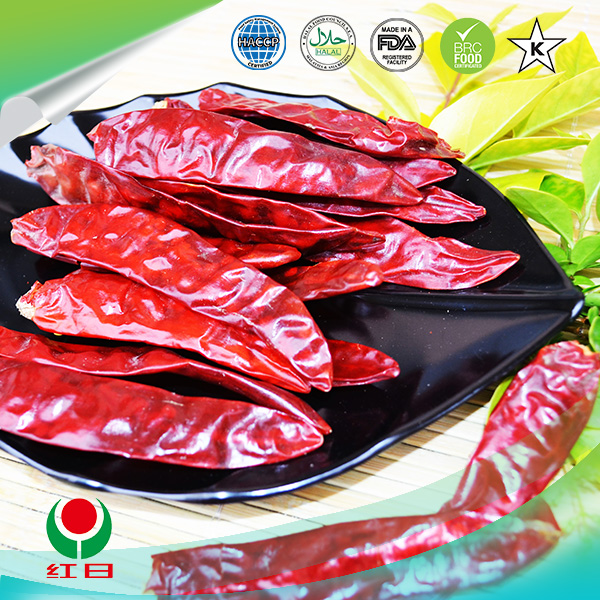- No. 268 Xianghe Street, Economic Development Zone of Xingtai city, Hebei 054001 China
- Byron@hbhongri.cn
Capsicum Oleoresin Extract: Bioactive Paint Preservative Innovation
In an era where sustainability and natural solutions dominate industrial innovation, capsicum oleoresin extract emerges as a groundbreaking bioactive preservative for paints and coatings. Derived from chili peppers, this potent extract leverages nature’s defense mechanisms to combat microbial degradation, UV damage, and oxidation in industrial applications. Leading this revolution is Xingtai Hongri Biotech Co., Ltd., a trailblazer in spice-based biotechnology. Nestled in Hebei Province, China, the company operates across 66,700 m² of advanced manufacturing facilities, producing 150 metric tons of capsicum oleoresin annually. Certified with ISO 9001, ISO 22000, and HACCP, Hongri Biotech merges cutting-edge extraction technology with rigorous quality control, ensuring solvent-free, additive-free oleoresins that meet global standards like HALAL and KOSHER. Their products fuel industries worldwide—from food to pharmaceuticals—and now pioneer eco-friendly paint preservation.

Understanding Oleoresin Capsicum: Nature’s Potent Elixir
Oleoresin capsicum is a concentrated, viscous extract obtained through solvent extraction of chili peppers (Capsicum annuum). It encapsulates the plant’s bioactive compounds—capsaicinoids (e.g., capsaicin), carotenoids (e.g., capsanthin), and volatile oils—delivering intense color, pungency, and antimicrobial properties. Unlike synthetic additives, it’s a 100% natural blend of resin and essential oils. Historically, oleoresin capsicum served dual roles: as a food additive for heat/color and in non-food applications like pepper sprays or analgesic plasters. Its versatility stems from capsaicin’s ability to trigger physiological responses (e.g., burning sensations) via TRPV1 nerve receptors. Hongri Biotech’s extraction process uses state-of-the-art supercritical CO₂ technology, eliminating solvent residues while preserving thermolabile compounds. The result is a potent, shelf-stable extract with Scoville Heat Units (SHU) customizable up to 2 million, catering to diverse industrial needs.
|
Feature |
Description |
|
Natural Colorant |
As it is natural color with solvent residue complies the regulation, paprika oleoresin is widely used in food colorant industry. |
|
Versatile Applications |
Like the paprika oleoresin, capsicum oleoresin is also widely used as a food additive to improve the pungency, or used as a main ingredient of pepper spray, or used in sticking plaster for heating. |
|
Pungency & Heat |
Because of the burning sensation caused by capsaicin when it comes in contact with mucous membranes, it is commonly used in food products to provide added spiciness or "heat" (piquancy), usually in the form of spices such as chili powder and paprika. In high concentrations, capsaicin will also cause a burning effect on other sensitive areas, such as skin or eyes. The degree of heat found within a food is often measured on the Scoville scale. |
|
Consumer Demand |
There has long been a demand for capsaicin-spiced products like chili pepper, and hot sauces such as Tabasco sauce and Mexican salsa. It is common for people to experience pleasurable and even euphoric effects from ingesting capsaicin. Folklore among self-described "chiliheads" attribute this to pain-stimulated release of endorphins, a different mechanism from the local receptor overload that makes capsaicin effective as a topical analgesic. |
|
Premium Quality |
Our capsicum oleoresin with ZERO additive is now hot selling to Europe, South Korea, Malaysia, Russia, and etc. ISO, HACCP, HALAL and KOSHER certificates are available. |
Oleoresin Capsicum in Food: Flavor, Color, and Preservation
Oleoresin capsicum in food transcends mere spiciness—it’s a multifunctional powerhouse. As a natural colorant, its rich carotenoids (e.g., capsorubin) impart vibrant red-orange hues to cheeses, meats, and snacks, replacing carcinogenic synthetic dyes like Red 40. For flavor enhancement, microencapsulated oleoresin capsicum delivers consistent heat without texture alteration, ideal for sauces, seasonings, and ready-to-eat meals. Critically, it extends shelf life via antimicrobial action: capsaicin disrupts bacterial cell membranes (e.g., E. coli, Salmonella) and inhibits fungal growth. Hongri Biotech’s additive-free extracts align with clean-label trends, offering heat levels from 10,000 to 500,000 SHU for customized culinary experiences. Beyond taste, capsaicin boosts metabolism and exhibits antioxidant activity, reducing lipid oxidation in fatty foods. From Korean gochujang to Mexican salsas, oleoresin capsicum in food meets global demand for authentic, natural, and functional ingredients.
Capsicum Oleoresin Extract: The Green Guardian of Paints
The leap from kitchens to coatings marks capsicum oleoresin extract’s most innovative application: a bioactive preservative for paints. Traditional paint additives (e.g., formaldehyde-releasing biocides) pose environmental and health risks. In contrast, capsicum oleoresin extract offers a non-toxic, biodegradable alternative. Capsaicinoids penetrate microbial biofilms, preventing algae, mold, and bacterial growth on painted surfaces exposed to moisture. Simultaneously, carotenoids act as UV stabilizers, slowing pigment fading and polymer degradation. Hongri Biotech’s trials show paint formulations with 0.5–2% capsicum oleoresin extract increase durability by 40% in humid climates. The mechanism is twofold:
Antimicrobial Action: Capsaicin disrupts quorum sensing in bacteria, inhibiting colony formation.
Antioxidant Shield: Carotenoids scavenge free radicals generated by UV exposure.
This synergy extends paint lifespan while reducing VOC emissions. Architects and manufacturers now prioritize such bio-based solutions to meet green building certifications (e.g., LEED), positioning capsicum oleoresin extract as the future of sustainable coatings.
FAQ: Unleashing the Power of Capsicum Oleoresin Extract
What advantages does oleoresin capsicum offer over synthetic preservatives?
Oleoresin capsicum outperforms synthetics with its dual functionality: antimicrobial protection and antioxidant stability. Unlike toxic biocides (e.g., isothiazolinones), it’s non-carcinogenic, biodegradable, and safe for indoor use. Its natural origin appeals to eco-conscious consumers, while reducing regulatory hurdles. In paints, it combats both microbial growth and UV degradation—a rare combination synthetics can’t match.
How is capsicum oleoresin extract applied in non-food industries?
Beyond paints, capsicum oleoresin extract serves as a natural preservative in cosmetics (preventing spoilage in creams), pharmaceuticals (enhancing topical analgesic efficacy), and textiles (anti-odor treatments). Its bioactive properties also show promise in biodegradable packaging films to inhibit food spoilage microorganisms.
Why choose your oleoresin capsicum for food manufacturing?
Our oleoresin capsicum guarantees zero additives, solvent-free purity, and customizable Scoville ratings. With ISO/HACCP certifications, we ensure consistent quality, traceability, and compliance with global food safety standards. The extract’s versatility allows seamless integration into sauces, snacks, or meat products without altering texture.
Can capsicum oleoresin extract replace chemical biocides in paints?
Absolutely. At 1–2% concentration, capsicum oleoresin extract provides comparable antimicrobial efficacy to chemical biocides but with superior environmental credentials. It’s particularly effective in water-based paints, where it remains stable and active for over 24 months, preventing mold in high-humidity environments.
What certifications back your oleoresin capsicum in food and industrial use?
We hold ISO 9001, ISO 22000, HACCP, HALAL, and KOSHER certifications. Our oleoresin capsicum in food complies with FDA, EFSA, and JECFA standards. For industrial grades, we provide technical dossiers validating antimicrobial efficacy and material compatibility.
Capsicum oleoresin extract epitomizes innovation where tradition meets technology. From igniting culinary masterpieces to preserving sustainable paints, its applications are as diverse as nature’s ingenuity. Xingtai Hongri Biotech Co., Ltd. stands at this intersection, leveraging 41,600 m² of advanced facilities and ethical certifications to deliver nature’s finest solutions. As industries pivot toward green alternatives, oleoresin capsicum emerges not just as an ingredient, but as a paradigm shift—proof that ecology and efficacy can coexist. For partnerships redefining sustainability, Hongri Biotech is your catalyst.
-
Capsicum frutescens oleoresin – High Purity, Food GradeNewsNov.17,2025
-
Capsicum Frutescens Oleoresin – Natural Heat & FlavorNewsNov.17,2025
-
Peppereka Powder – Fresh, Vibrant Color & Sweet AromaNewsNov.17,2025
-
Paprika Oleoresin | Natural Red Color, Heat & Flavor BoostNewsNov.17,2025
-
Pure Turmeric Extract 95% Curcumin | Potent, Lab-TestedNewsNov.17,2025
-
Red Papper Pods – Premium Sun-Dried, Bold Heat & AromaNewsNov.10,2025







